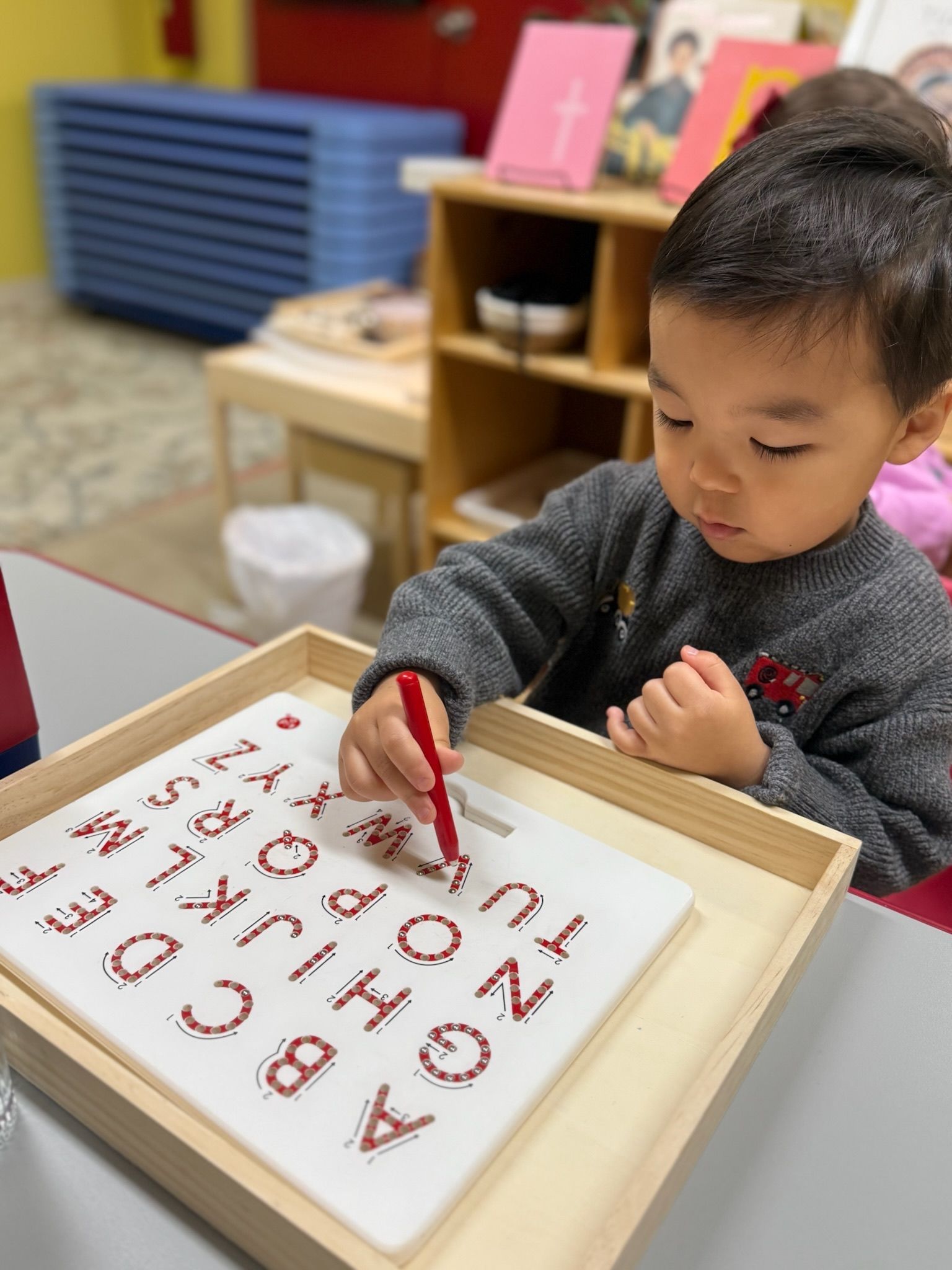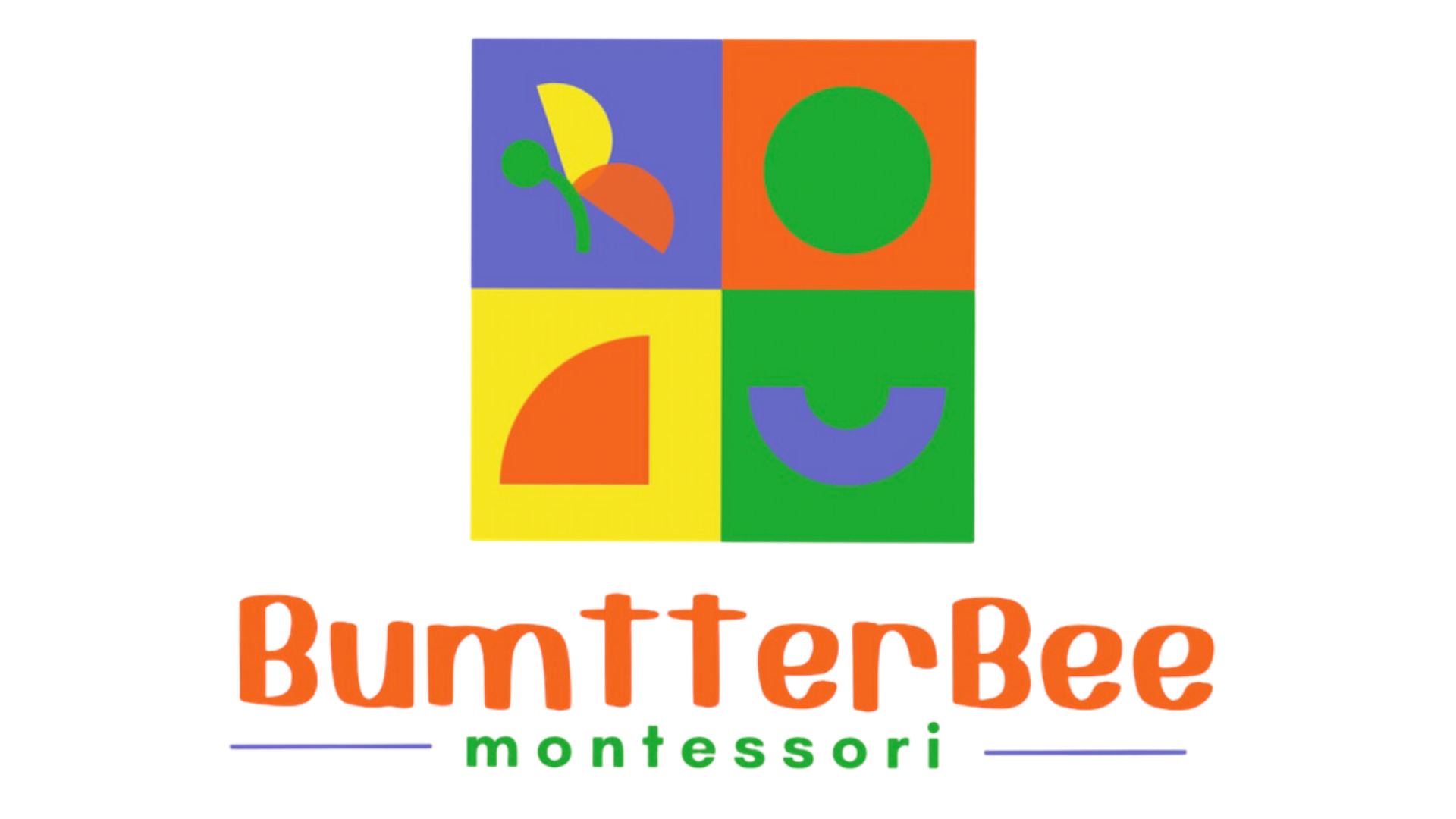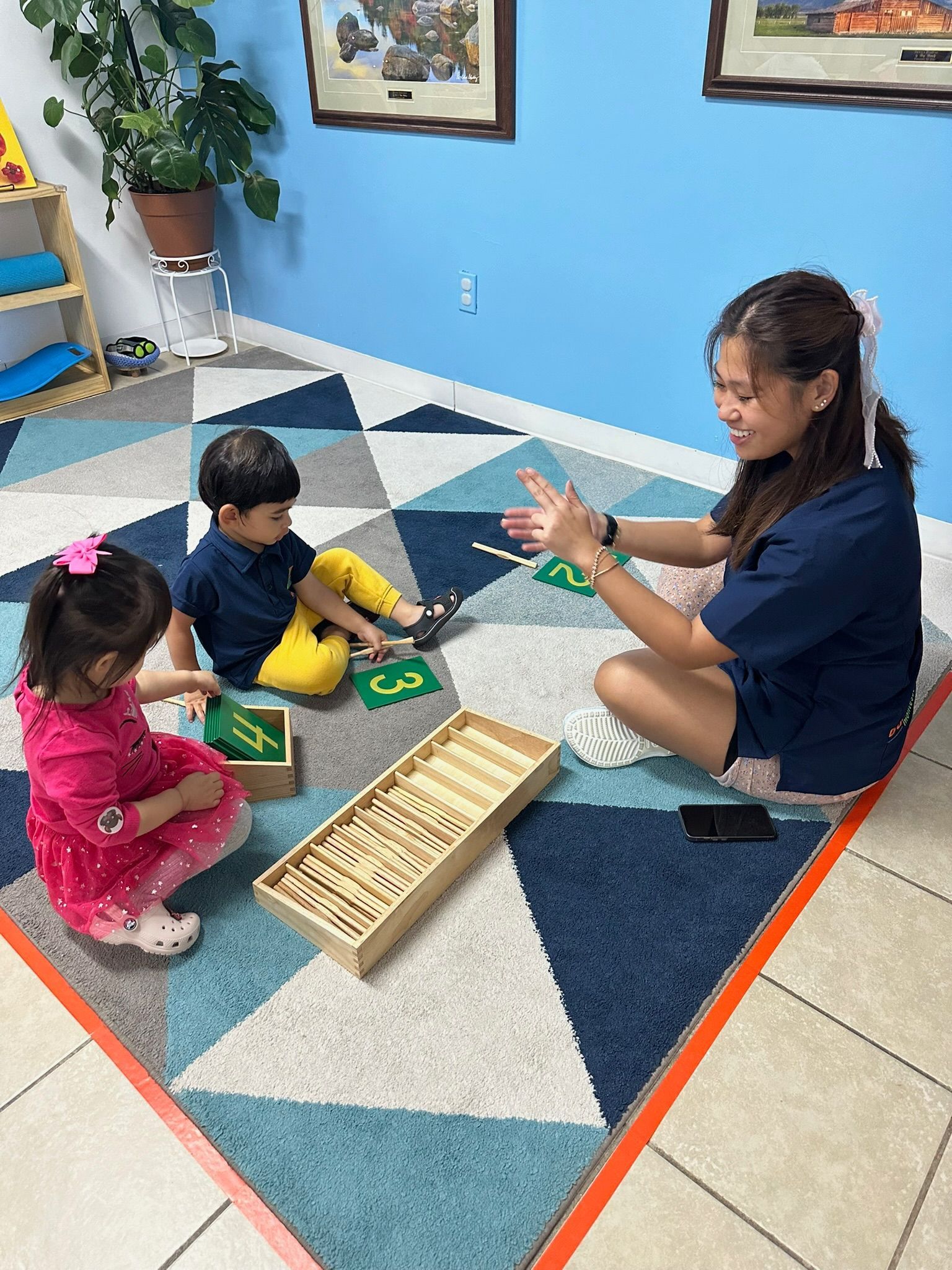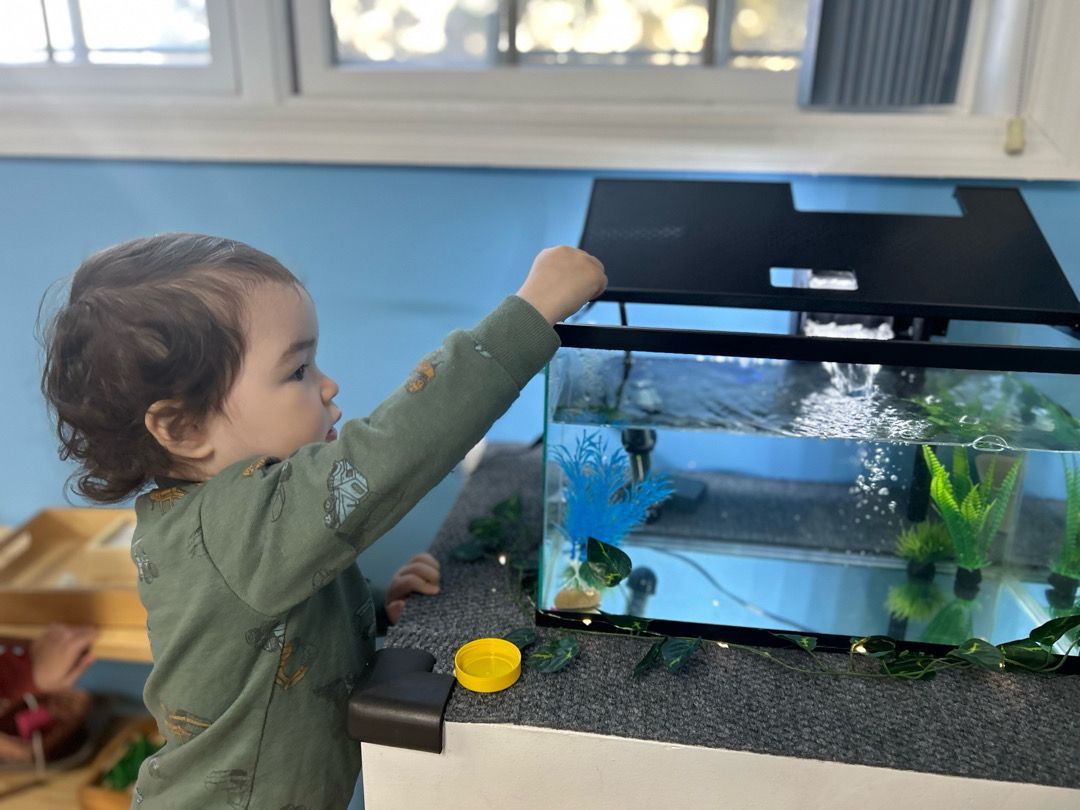BumtterBee Montessori
“Where curiosity meets education and where your child's path to independence begins.”
MONTESSORI METHOD
The Montessori Method for young children (ages 2-5) is based on hands-on learning and real-world experiences. Children develop independence, concentration, and a deep love of learning through engaging in five main areas:
Slide title
Write your caption hereButton
Practical Life
involves everyday activities that help children build independence and life skills. These activities encourage coordination and focus, like pouring, spooning, or caring for their environment by cleaning and organizing. Children learn to take care of themselves and others, while developing fine and gross motor skills. These tasks build confidence and allow them to feel capable and responsible.
Sensorial
activities focus on refining the five senses. Through materials designed to isolate specific qualities (such as size, color, texture, shape, or sound), children explore the world around them in a tactile and engaging way. For example, children may match colored tablets, sort objects by size, or listen to different sounds to improve their sensory perception and ability to categorize. This helps children develop a keen sense of observation and attention to detail.

Slide title
Write your caption hereButton

Slide title
Write your caption hereButton
Language
development in Montessori centers on oral language skills and pre-literacy activities. Children are encouraged to engage in conversations, storytelling, singing, and listening to stories, which builds vocabulary and communication skills. As children begin to associate sounds with letters through games or sandpaper letters, they develop phonemic awareness. Writing activities, such as tracing letters or forming simple words with a movable alphabet, help strengthen early literacy.
Math
In Montessori is built on concrete, hands-on materials that introduce basic mathematical concepts like counting, patterns, and number operations. Children use beads, rods, or other manipulatives to explore numbers and perform simple addition and subtraction. This hands-on approach makes abstract concepts more tangible and allows children to understand math in a visual and kinesthetic way. They may also engage in activities to recognize shapes, measure objects, and identify patterns in their environment.
Slide title
Write your caption hereButton
Slide title
Write your caption hereButton
Culture/Science
incorporates exploration of the natural world, geography, and simple science concepts. Children learn about animals, plants, and the environment by observing and interacting with nature. They may use maps to understand geography, study different cultures and traditions, or explore basic scientific principles like the water cycle or the senses. Activities in this area cultivate curiosity, observation skills, and an appreciation for the world around them.
All Rights Reserved | BumtterBee Montessori



